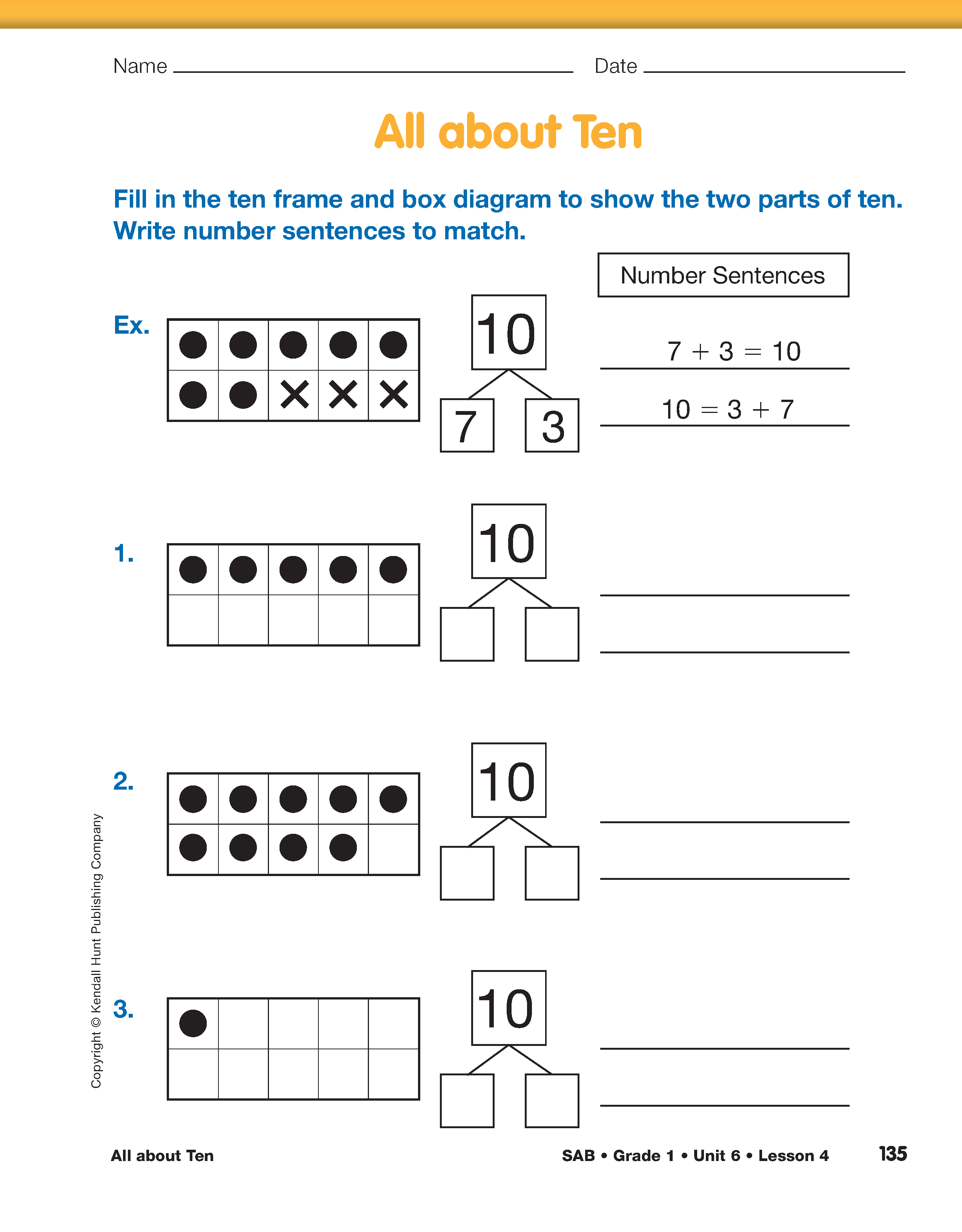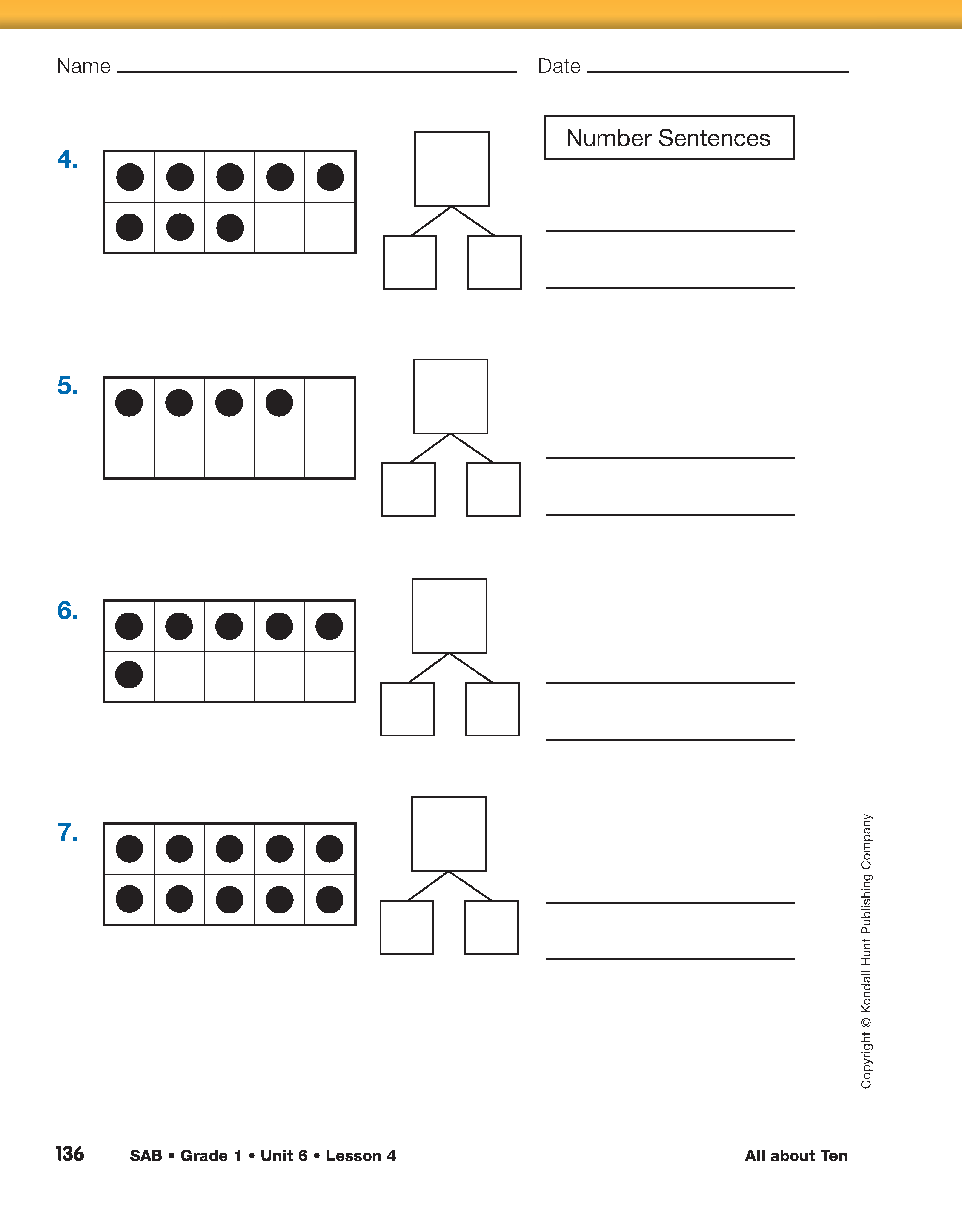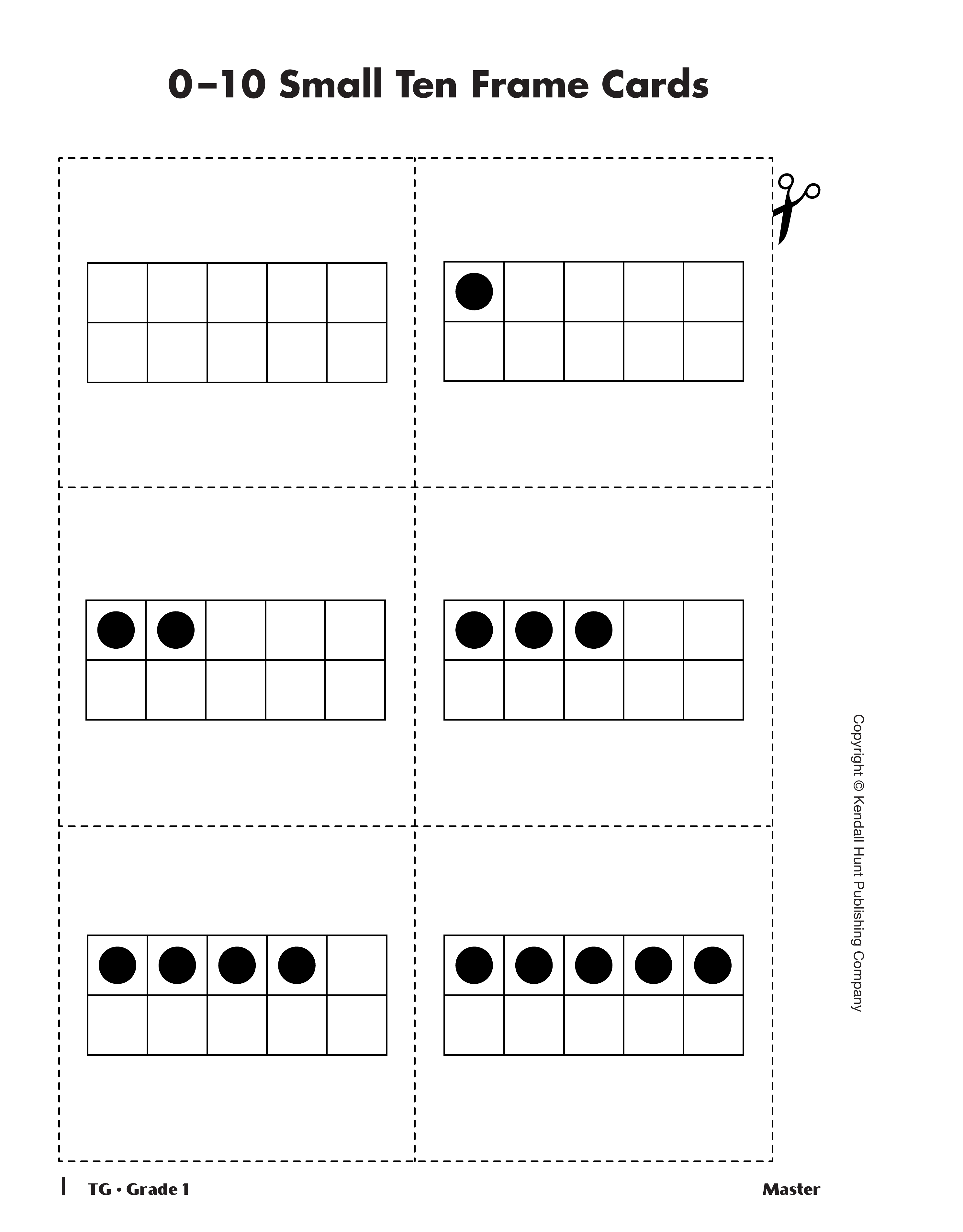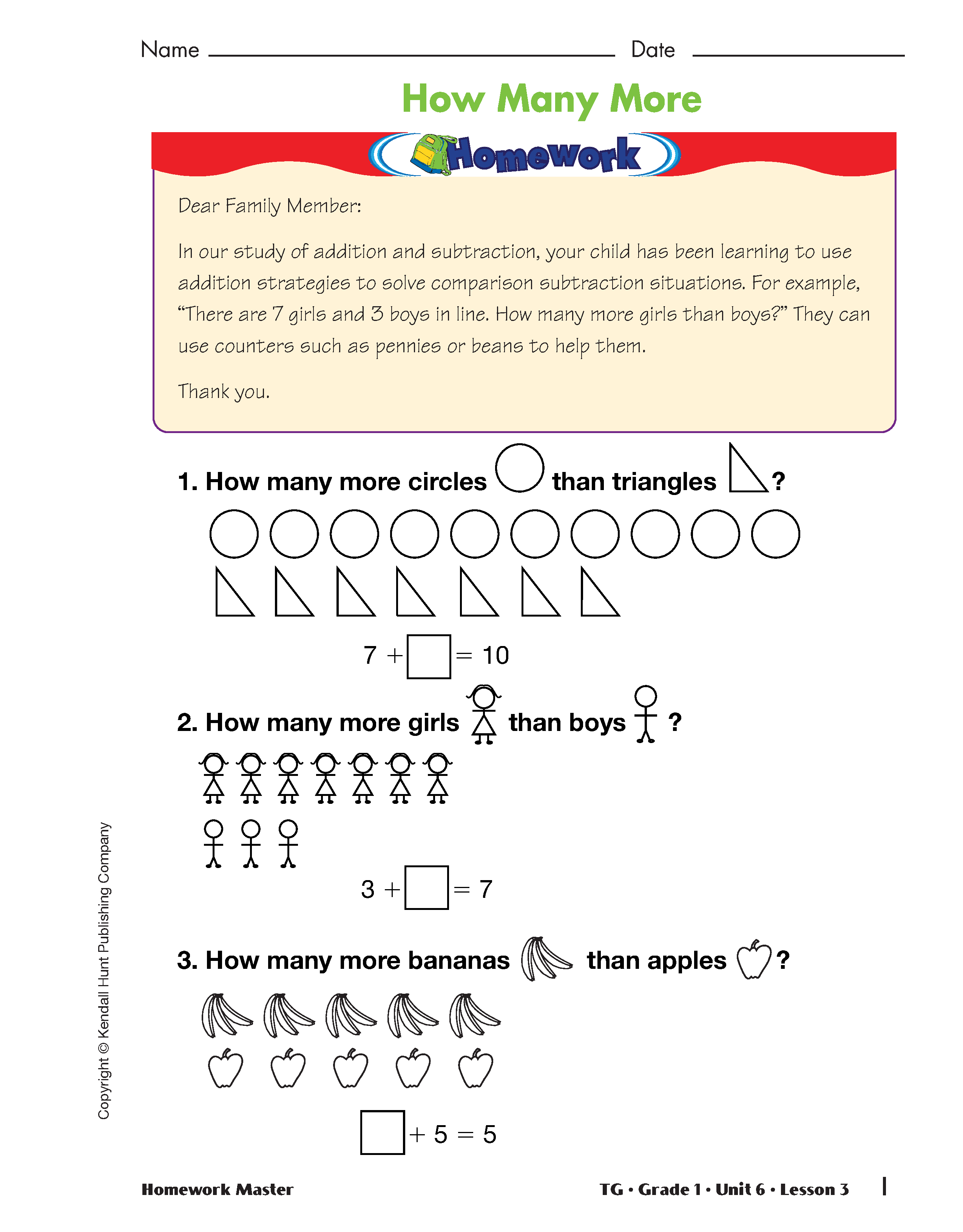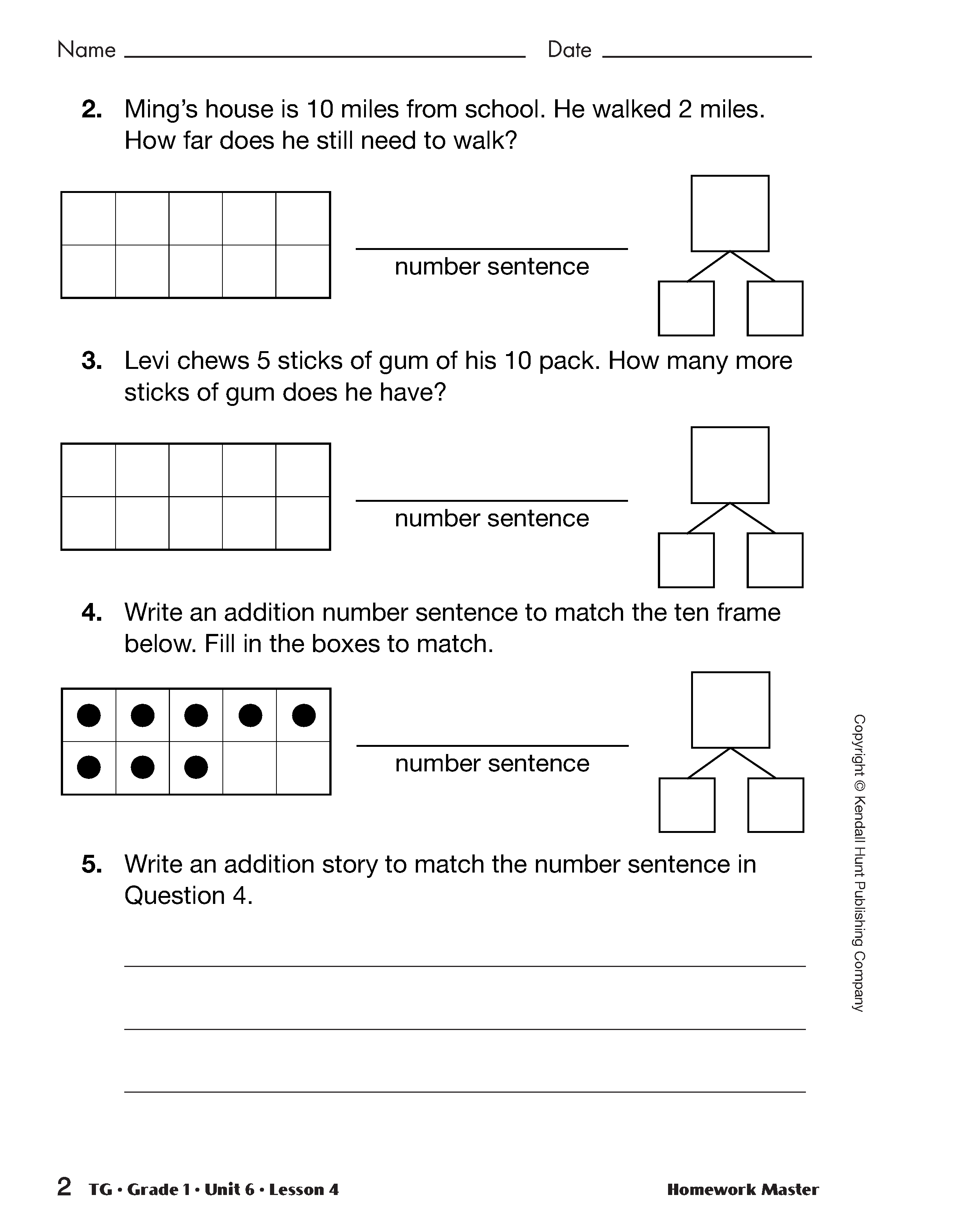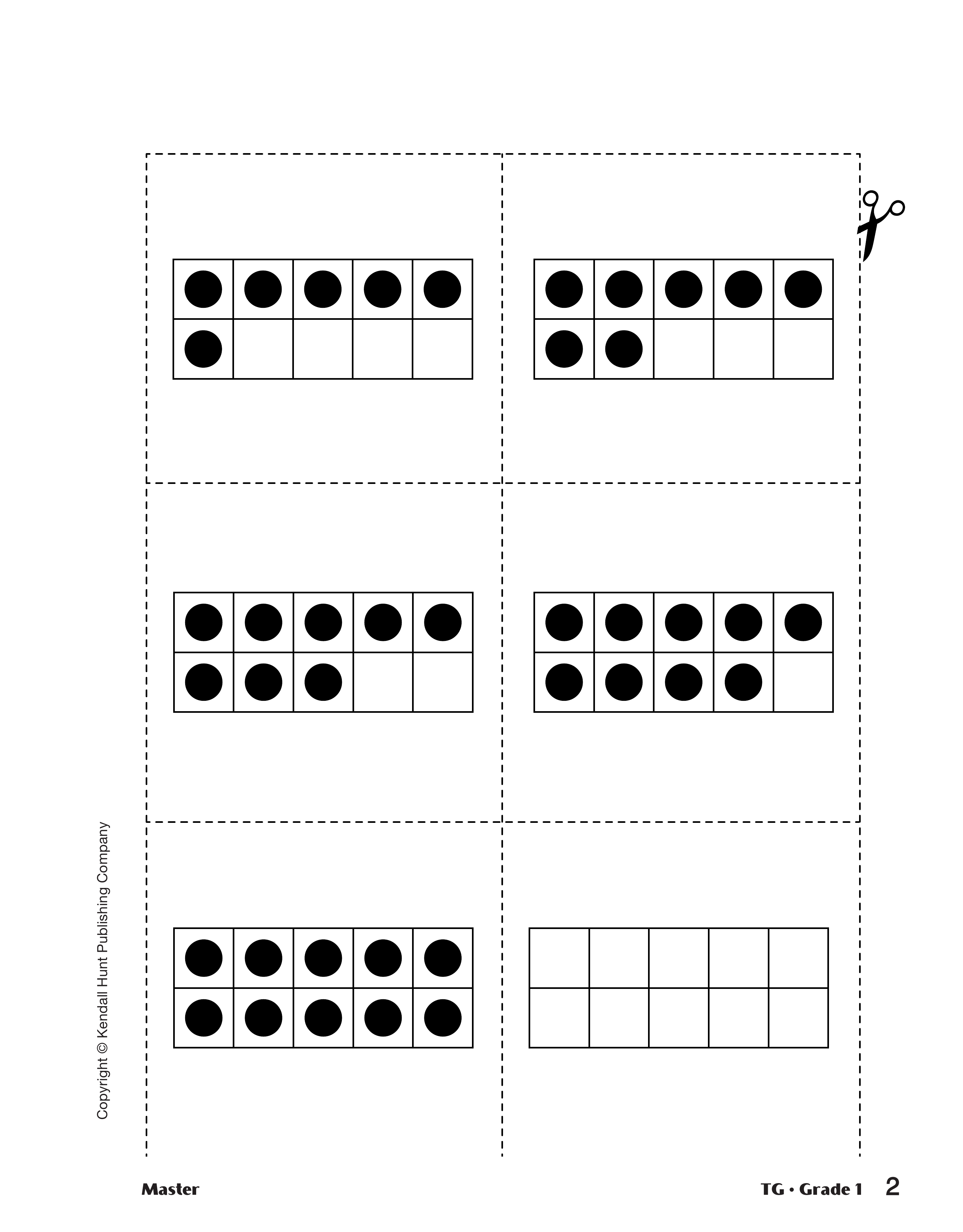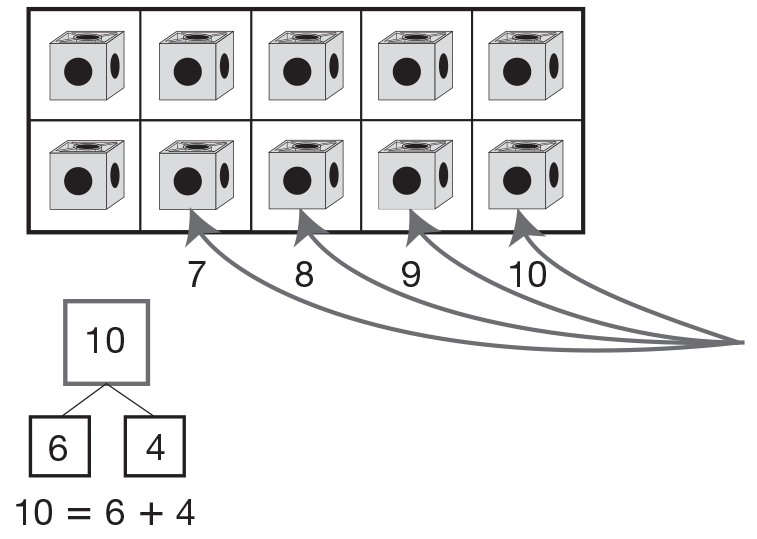All about Ten
Est. Class Sessions: 2Developing the Lesson
Part 1: Add Sums to Ten with Ten Frames
Connect Ten Frames and Box Diagrams. Using a display of the Large Ten Frame and Box Diagram Master, introduce adding sums to ten by placing 6 cubes of one color on the display. Place the cubes on the top row from left to right.
Ask:
Write 6 + = 10 and + 6 = 10 on the board.
Complete the box diagram to the right of the ten frame to show the partitions of 10. See Figure 1. Place other cube combinations and have students complete the corresponding box diagram and number sentence.
To continue to practice finding the partitions of ten ask students to complete the questions on the All about Ten pages in the Student Activity Book. Use the Large Ten Frame and Box Diagram Master to discuss the example before students work independently on Questions 1–7.
Display the example and ask:
Encourage students to think of all the number sentences. Students may suggest turn-around facts such as 3 + 7 = 10 and 7 + 3 = 10 or their sentences may begin with the whole, as in 10 - 7 = 3, or 10 - 3 = 7. Discuss how each number sentence represents what is on the ten frame. Provide time for students to work in pairs to complete the pages and write addition sentences for each of the problems.
Students may need extra help with the last ten frame that shows the use of zero (the one that is completely filled). 10 + 0 = 10. Discuss the problem with the whole class. Ask if someone can figure out what the number sentence is and write it on the display. If no one is able to solve it, model it using cubes on the ten frame display. Remind students about zero.
Ask:
After students have completed the page, have them share their results and brainstorm a list of all combinations of 10 that can be made using number sentences. Place the list on chart paper or on the board for reference later in the lesson.
Play Ten Frame Flash: Ten Facts. Display the 0–10 Small Ten Frame Cards. See Materials Preparation. Mix the order of the cards. Select a flash card to display for about five seconds. Remove the card.
Challenge students to determine how many more are needed to make ten.
Show the card again so they can see whether they were correct. Ask volunteers for a number sentence. Repeat for other numbers. As students become more proficient, display each card for less time. This activity serves as a warmup for the Make Ten game.
Assign the How Many More to Ten Homework Master.














